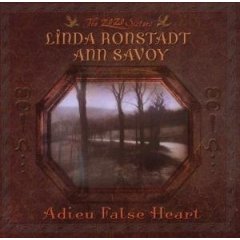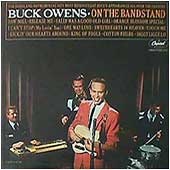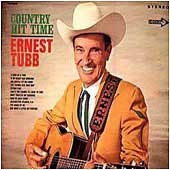| Devil's Elbow | ||||
|---|---|---|---|---|
 | ||||
| Studio album by | ||||
| Released | 1972 | |||
| Recorded | The Sound Shop, Nashville, Tennessee | |||
| Label | Warner Bros. | |||
| Producer | Buddy Killen | |||
| Doug Kershaw chronology | ||||
| ||||
Devil's Elbow is a 1972 album by Doug Kershaw. [1]
| Devil's Elbow | ||||
|---|---|---|---|---|
 | ||||
| Studio album by | ||||
| Released | 1972 | |||
| Recorded | The Sound Shop, Nashville, Tennessee | |||
| Label | Warner Bros. | |||
| Producer | Buddy Killen | |||
| Doug Kershaw chronology | ||||
| ||||
Devil's Elbow is a 1972 album by Doug Kershaw. [1]
The album was received as a swing towards psychedelic music. [2] [3] [4] Stereo Review did not welcome Kershaw's move from Cajun fiddler to Nashville singer. [5]
Psychedelic music is a wide range of popular music styles and genres influenced by 1960s psychedelia, a subculture of people who used psychedelic drugs such as LSD, psilocybin mushrooms, mescaline and DMT to experience visual and auditory hallucinations, synesthesia and altered states of consciousness. Psychedelic music may also aim to enhance the experience of using these drugs.
Johnny Christopher is a songwriter.
Troy Harold Seals is an American singer, songwriter, and guitarist.
Thomas Clark Cogbill was an American bassist, guitarist and record producer working in the R&B, soul music, and country music genres.
Edward Lee Thrasher Jr., known as Ed Thrasher, was an American Art Director and photographer. He was the recipient of numerous Grammy Award nominations for his work on album covers and won a Grammy for Best Album Package in 1974 for the Mason Proffit cover "Come & Gone". He worked with many artists, such as Frank Sinatra, Dean Martin and The Beach Boys.
Cajun music, an emblematic music of Louisiana played by the Cajuns, is rooted in the ballads of the French-speaking Acadians of Canada. Cajun music is often mentioned in tandem with the Creole-based zydeco music, both of Acadiana origin, and both of which have influenced the other in many ways. These French Louisiana sounds have influenced American popular music for many decades, especially country music, and have influenced pop culture through mass media, such as television commercials.

Give Out But Don't Give Up is the fourth studio album by Scottish rock band Primal Scream. It was released on 28 March 1994 in the United Kingdom by Creation Records and in the United States by Sire Records. Musically, it marked a massive departure from the psychedelic sound of their previous studio album Screamadelica (1991) into one influenced by classic rock and blues music. Its cover photo is a cropped version of Troubled Waters by seminal American photographer William Eggleston.

Douglas James Kershaw is an American fiddle player, singer and songwriter from Louisiana. Active since 1948, he began his career as part of the duo Rusty and Doug, along with his brother, Rusty Kershaw. He had an extensive solo career that included fifteen albums and singles that charted on the Hot Country Songs charts. He is also a member of the Louisiana Music Hall of Fame, being inducted in 2009.

Shadowland is the debut solo album by k.d. lang, released in 1988. The album included her collaboration with Kitty Wells, Loretta Lynn and Brenda Lee on "Honky Tonk Angels' Medley" and was produced by Owen Bradley, who produced Patsy Cline's best-known work.
Heroes is an album by Mark O'Connor, in which he plays duets alongside his childhood fiddle heroes, including Jean-Luc Ponty, Benny Thomasson, Byron Berline, Stéphane Grappelli, Johnny Gimble, and others. It crosses a variety of musical genres and contains recordings made from 1976 to 1992.

Adieu False Heart is a Grammy-nominated 2006 album by American singer, songwriter, and producer Linda Ronstadt featuring Cajun music singer Ann Savoy. It peaked at #146 on the Billboard album chart. According to Nielsen SoundScan, the disc sold a total of 67,203 copies as of December, 2016.

Ballads of the Hills and Plains is the fourth studio album by American country music singer and songwriter Hank Williams Jr. The album was issued by MGM Records as number E/SE 4316.

Blues My Name is the fifth studio album by American country music singer and songwriter Hank Williams, Jr. The album was issued by MGM Records as number E/SE 4344 and later re-issued by Polydor Records as 833 069-1 Y-1.

Cajun music has its roots based in the ballads of the French-speaking Acadians of Canada, and in country music.
The Balham Alligators were a band from London that mixed rock 'n' roll, cajun, country and R&B. The band centred on singer and instrumentalist Geraint Watkins.

Don't Go Near the Water is the debut album of American country music artist Sammy Kershaw. Released in 1991 on Mercury Records, the album produced four singles on the Billboard Hot Country Singles & Tracks charts: "Cadillac Style", the title track, "Yard Sale", and "Anywhere but Here", which peaked at numbers 3, 12, 17, and 10, respectively. Also included is "What Am I Worth", a song previously recorded by George Jones on his 1957 debut Grand Ole Opry's New Star. Jones's style has been cited as one of Kershaw's primary influences. Don't Go Near the Water is certified platinum in the United States.

Highwayman is the thirty-fifth album by American singer/guitarist Glen Campbell, released in 1979.

On the Bandstand is an album by American country music artist Buck Owens, released in 1963. It peaked at Number 2 on the Billboard Country Albums charts.

I Don't Care is an album by Buck Owens and his Buckaroos, released in 1964. It reached Number one on the Billboard Country charts and Number 135 on the Pop Albums charts. The single "I Don't Care" spent six weeks at number one.

The Hills of Indiana is a 1971 album by Lonnie Mack.

A Legend in My Time is the fourth studio album by country music artist Ronnie Milsap, released in 1975. Two singles were released from the album, including the Don Gibson penned "(I'd Be) A Legend in My Time," which reached #1 on country charts and Al Dexter's "Too Late to Worry, Too Blue to Cry", which peaked at #6.

Country Hit Time is an album by American country singer Ernest Tubb, released in 1968.

Cajun fiddle music is a part of the American fiddle music canon. It is derived from the music of southwest Louisiana and southeast Texas, as well as sharing repertoire from the Quebec and Cape Breton Island traditions. It is one of the few extant North American folk music traditions rooted in French chanson. According to Ron Yule, "Louisiana fiddling had its birth roots in Europe, with fiddling being noted as early as the 1400s in Scotland". Zydeco music is a geographically, culturally, and musically related style.

Carnival of Sound is the last studio album by the American rock duo Jan and Dean. Though recorded sporadically from 1966 to 1968, it was not released until 2010. Even though it is credited as a Jan and Dean record, it is actually more of a Jan Berry solo effort. Jan died in 2004. The album consists mostly of original material, with a few covers of songs by artists such as The Five Satins and The Coasters. The album is notable for having a more psychedelic sound than other Jan and Dean records.
| This 1970s album-related article is a stub. You can help Wikipedia by expanding it. |